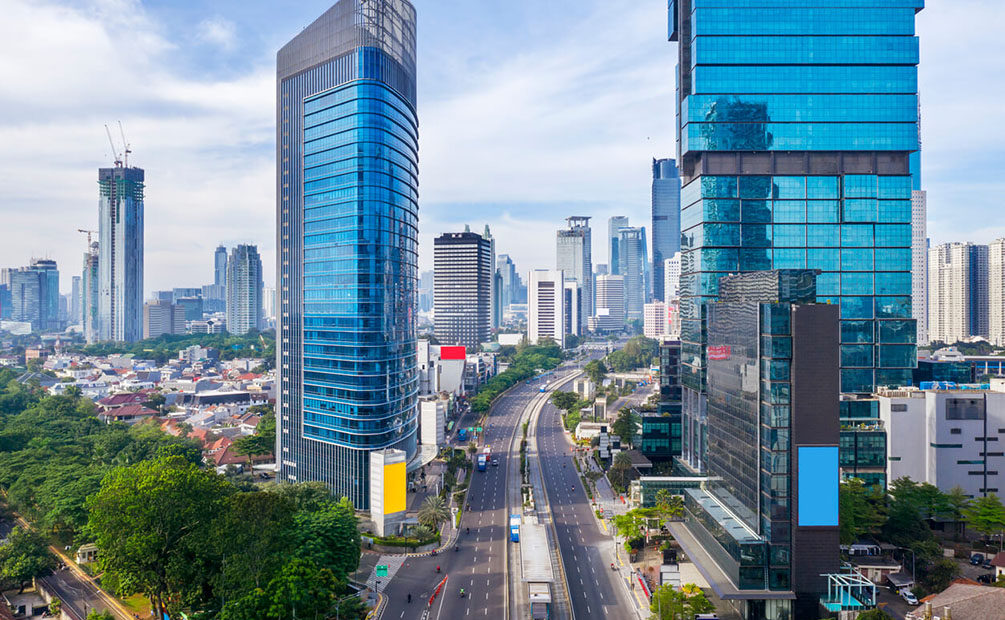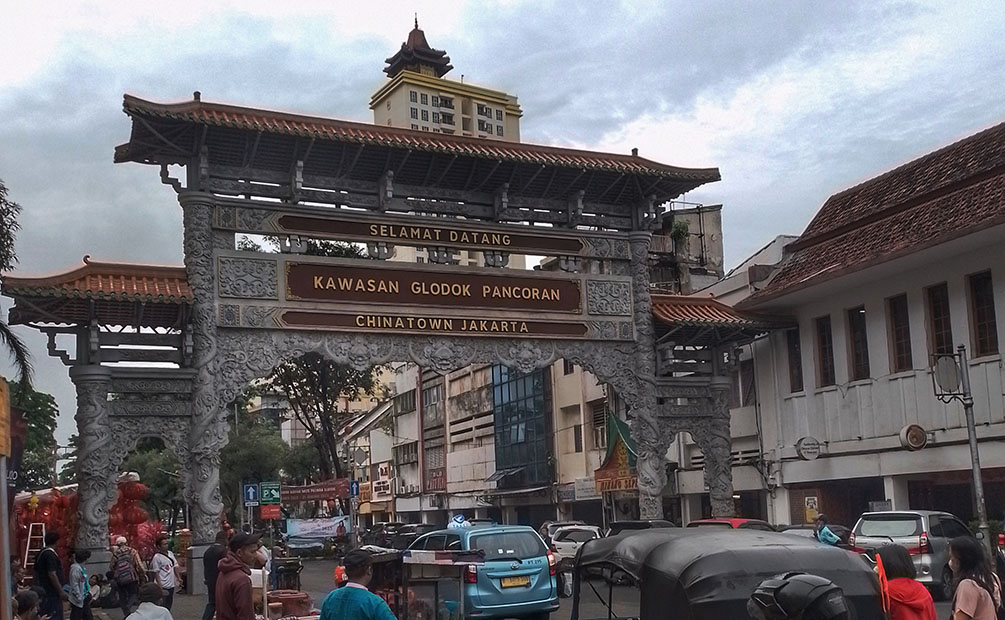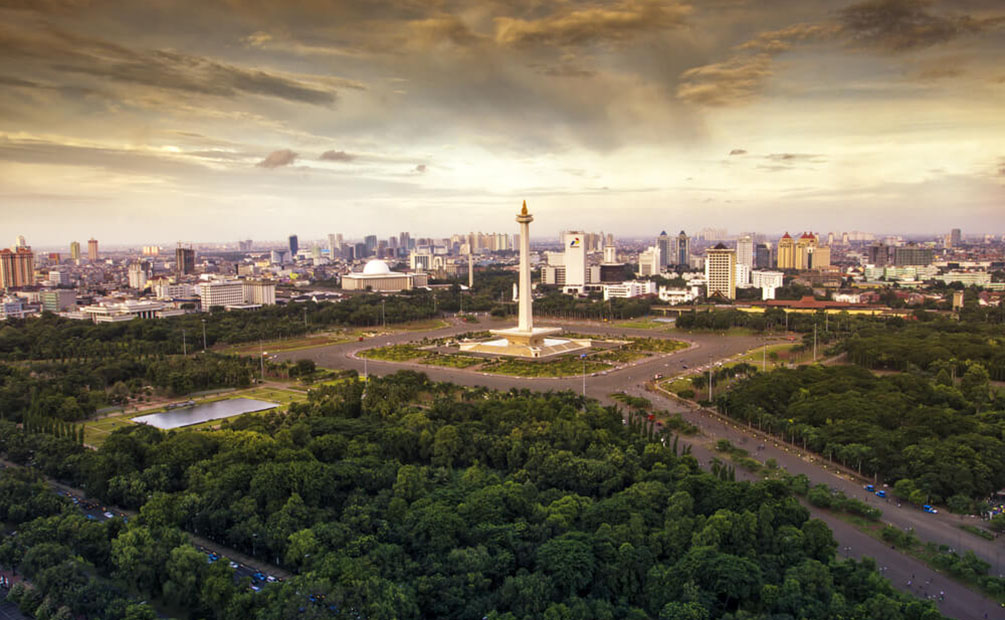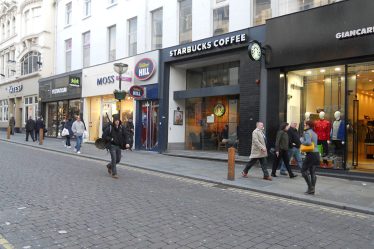
Packing Essentials:
When preparing for Jakarta, it’s crucial to pack light, breathable clothing suitable for warm and humid weather. Lightweight and comfortable outfits, sunscreen, sunglasses, and a wide-brimmed hat are essential to combat the tropical climate.
Local Weather:
If you’re heading to Jakarta in January, it’s essential to prepare for warm and humid weather. Here’s what you might want to consider bringing:
Packing Tips for January Travel in Jakarta:
- Lightweight and Breathable Clothing: Opt for loose-fitting, breathable clothes made from natural fabrics like cotton or linen. T-shirts, shorts, skirts, and dresses are suitable for the warm climate.
- Rain Gear: January falls within the rainy season in Jakarta. While rainfall might not be excessive, occasional showers are common. Pack a compact, lightweight rain jacket, poncho, or a foldable umbrella for unexpected showers.
- Comfortable Footwear: Choose comfortable walking shoes or sandals for exploring the city. Consider waterproof options if possible to handle rain showers.
- Sun Protection: Don’t forget to pack sunscreen with a high SPF, sunglasses, and a wide-brimmed hat to shield yourself from the sun’s rays.
- Light Layers: Evenings might be slightly cooler, so having a light sweater or a long-sleeved shirt can be useful for cooler moments or indoor spaces with air conditioning.
- Insect Repellent: With the tropical climate, insect repellent can be handy, especially during outdoor activities or visits to parks.
- Portable Fan or Handheld Fan: While not a necessity, a small portable fan or handheld fan could provide relief during particularly hot days or in crowded places.
Remember to pack light and practical clothing suitable for the weather and activities you plan to enjoy in Jakarta during January.
Understanding Local Culture:
Indonesia’s cultural fabric is diverse, comprising various ethnic groups and traditions. Respect for local customs and traditions is crucial. When visiting religious sites or entering someone’s home, modest dressing is advisable. Learning a few basic phrases in Bahasa Indonesia, the national language, can go a long way in connecting with locals.
Travel Gear:
Carrying a sturdy water bottle, insect repellent, and a small first-aid kit is advisable for explorations in Jakarta. A portable power bank can be handy for charging devices on-the-go. Additionally, a universal adapter ensures compatibility with local power outlets.
Currency Exchange:
Local currency in Indonesia is the Indonesian Rupiah (IDR). Exchange currency at authorized money changers or banks to get the best rates. Avoid exchanging money at the airport as the rates may not be as favorable.
Budgeting Tips:
Indonesia, particularly Jakarta, offers a wide range of options catering to various budgets. Street food stalls offer delicious and affordable meals, while upscale restaurants can be pricier. Setting a daily budget for food, transportation, and activities can help manage expenses effectively.
Setting a budget for your trip to Jakarta is a wise move to ensure you enjoy the experience without overspending. Here’s a breakdown you might consider for a daily budget:
Sample Daily Budget for Jakarta Trip:

Accommodation:
- Budget: $30 – $50
- Mid-range: $50 – $100
- Luxury: $100 and above
Food and Drinks:
- Street food: $5 – $10 (for several meals)
- Local eateries: $10 – $20
- Upscale restaurants: $20 and above for a meal
Transportation:
- Public transportation (e.g., buses, trains): $2 – $5
- Ride-hailing services: $5 – $15 (depending on distance)
- Renting a bicycle: $5 – $10 per day
Activities and Entertainment:
- Museums and attractions: $5 – $15 (per entry)
- Guided tours or cultural shows: $10 – $30
- Park entrances or events: $5 – $20
Miscellaneous:
- SIM card: $5 – $10 (plus credit for data)
- Souvenirs or shopping: Variable (depends on personal preferences)
- Tips and additional expenses: $5 – $10
Total Estimated Daily Budget Range:
- Budget Traveler: $20 – $40 per day
- Mid-range Traveler: $40 – $100 per day
- Luxury Traveler: $100 and above per day
Remember, these are rough estimates and can vary based on personal choices, preferences, and the specific activities or locations you plan to visit. Adjust your budget accordingly to suit your travel style and priorities while ensuring you have a comfortable and enjoyable trip to Jakarta.
Using the Metro:
The Mass Rapid Transit (MRT) system in Jakarta provides a convenient and efficient way to travel across the city. Here’s a breakdown of the costs and convenience:
Ticket Costs:
- Single-Trip Ticket:
- Approximately $0.40 – $1.00 per trip depending on the distance traveled.
- Jak Lingko Card (Prepaid Card):
- Initial card cost: Around $3.00 – $5.00 (includes some stored value)
- Stored value for travel: Can be loaded with various amounts, starting from $2.00 – $5.00
Convenience Level:
- Single-Trip Ticket:
- Pros: Ideal for one-time travelers or occasional MRT users. It’s convenient for visitors or those with minimal travel needs.
- Cons: Might require queuing at the ticket machines, especially during peak hours. There’s no stored value, so each trip requires purchasing a new ticket.
- Jak Lingko Card (Prepaid Card):
- Pros: Offers convenience with cashless transactions and saves time, especially during rush hours. The card can be reloaded, allowing continuous use.
- Cons: Requires an initial purchase cost for the card itself and topping up with credit, which might not be cost-effective for very short stays.
Personal Experience:
Using the Jak Lingko card during my time in Jakarta proved to be highly convenient. The initial cost of the card was reasonable considering the ease of use and the flexibility it provided. Having the card meant bypassing ticket queues, and the stored value feature made traveling hassle-free, especially during busy hours.
The single-trip tickets, although inexpensive, were less convenient for frequent travel as they required buying a new ticket for each journey. This option suited me during the first few days of exploration, but as I settled into the city, the prepaid card became more economical and practical.
Overall, both options offer efficient access to Jakarta’s MRT system. The choice between a single-trip ticket and the prepaid card depends on the duration of stay, frequency of travel, and personal convenience preferences. For longer stays or regular commuting, the Jak Lingko card proves to be a cost-effective and time-saving choice.
Renting a Car Comparison:
In Jakarta, ride-hailing services like Grab and conventional taxis are convenient alternatives to renting a car or navigating public transport, especially considering the city’s notorious traffic congestion.

Taxi and Ride-Hailing Costs:
- Taxi Fares:
- Starting fare: Around $0.50 – $1
- Additional fare per kilometer: Approximately $0.20 – $0.40
- Waiting time charge: About $0.10 – $0.15 per minute
- Ride-Hailing Services:
- Grab, Gojek, etc., follow a similar fare structure to taxis but may offer occasional discounts or promo codes.
Personal Experience:
Using ride-hailing services or taxis in Jakarta was a practical choice due to the city’s traffic. The fares were reasonable, especially when splitting costs among friends or fellow travelers. However, the actual fares might vary depending on the distance traveled and the time of day due to potential surge pricing during peak hours.
Navigating the city via taxis or ride-hailing apps offered a stress-free experience. Drivers were generally friendly and knew the city well, which helped avoid getting lost or stuck in heavy traffic. The convenience of door-to-door service, particularly during rainy weather or late hours, made it a preferable mode of transportation.
However, occasional traffic jams during rush hours could result in longer travel times and slightly higher fares due to increased waiting times. Yet, the comfort and ease of not having to deal with parking or Jakarta’s challenging traffic conditions outweighed these occasional inconveniences.
In summary, taxis and ride-hailing services in Jakarta offer a reliable and convenient way to navigate the city, providing flexibility without the responsibilities and challenges of driving in congested areas. Despite potential surcharges during peak times, the overall convenience and efficiency make them a preferred mode of transportation for exploring the city.
Getting a Local SIM Card:
Buying a local SIM card upon arrival is advisable for seamless communication and internet access. Major providers like Telkomsel, Indosat, or XL Axiata offer affordable data plans for tourists.
As you embark on your Jakarta adventure, armed with these insights and tips, I’m certain your journey will be nothing short of remarkable. The vibrant blend of cultural richness, delectable cuisines, and the city’s dynamic energy await your exploration.
Embrace the warmth of Jakarta’s people, indulge in the flavors of its street food, marvel at its historical treasures, and immerse yourself in the bustling urban landscape. Navigate the city with ease, making the most of its transportation options while savoring every moment of your cultural odyssey.
Whether you’re captivated by the history at Jakarta Old Town, delving into the intricacies of local life at Taman Mini Indonesia Indah, or marveling at the grandeur of the Istiqlal Mosque, Jakarta promises an array of experiences to cherish.
Remember, as you step into this cultural tapestry, respect for local customs and traditions enriches your journey. Stay open to new encounters, immerse yourself in the diverse local culture, and treasure the moments that make your Jakarta adventure truly unforgettable.
Safe travels and may your Jakarta escapade be filled with wonder, discovery, and lasting memories!


